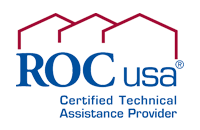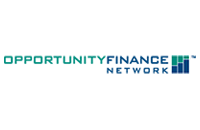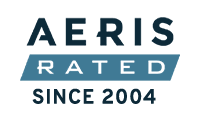
CDFIs: Bridging over the economy’s troubled waters
By Community Loan Fund staff
This is not the time to search for shiny new ideas. Now is the time to invest in what works: CDFIs are already filling capital gaps in underserved communities for workers with low-incomes, people of color, and immigrants.
A biological hurricane has upended the U.S. economy, leaving every community facing tremendous uncertainty. One thing is crystal clear, however: Low- and moderate-income communities will suffer the most, unless we move quickly to address their needs.
Despite the recent allocation of $30 billion to community financial institutions for the Paycheck Protection Program, federal relief funds will be wholly insufficient to the scale of the challenge facing these communities, making it imperative that we mobilize private, more-agile, sources of capital. Now is the time for impact investors to step up—but with so many communities and businesses in need, how does one make the right choices?
This is not the time to search for shiny new ideas. Now is the time to invest in what works: Over 1,000 community development financial institutions (CDFIs) are already filling capital gaps in underserved communities for workers with low-incomes, people of color, and immigrants. With an increase in resources, particularly grants and lower-cost, patient, capital, these institutions can be leveraged to help businesses, right now, stabilize and pivot to survive
the current downturn.
CDFIs are the bridge between impact investors and low-income communities. We go far beyond lending, providing in addition relationship-based technical assistance to small business owners—exactly what is needed now. Money alone will not be enough to get entrepreneurs through this unprecedented time, because the economy that fueled their businesses is gone and not coming back. Local business owners need advisors who know their businesses—advisors whom they trust to help them reinvent themselves for a new economy.
 CDFIs have a 40-year track record. Now is time to leverage that expertise and lending capacity. We encourage investors to seek out their local CDFIs and learn more about their approach to the current crisis. Below, we at the New Hampshire Community Loan Fund share our understanding of the problem we face, and the strategy we are using to stabilize businesses and help them adapt. We hope this roadmap will help investors move quickly to deploy capital effectively in underserved communities.
CDFIs have a 40-year track record. Now is time to leverage that expertise and lending capacity. We encourage investors to seek out their local CDFIs and learn more about their approach to the current crisis. Below, we at the New Hampshire Community Loan Fund share our understanding of the problem we face, and the strategy we are using to stabilize businesses and help them adapt. We hope this roadmap will help investors move quickly to deploy capital effectively in underserved communities.
The immediate problem
The economy that existed prior to February 2020 is no longer. When we awaken from the coma, past customers will not return in the same way—they will have new buying habits and will value products and services differently. This means that three months of relief money places an important finger in the dike, but it does not fill the hole. Small businesses must reinvent themselves to serve whatever markets might lie ahead.
Even in good times, this is difficult. The current uncertainty makes it even harder. Businesses will need both flexible, low-cost capital and customized technical assistance from trusted advisors who know their businesses well. Generic advice that typically comes with public programs will not suffice.
Capital is part of the solution, but it must be applied with precision: It must come at the right time, in the right amount, structured in the right way. Delivering money with a blunt instrument—i.e., one-size-fits-all government loans—will likely lead to a mismatch, which is bad for both the business and the capital provider. Previous federal disasters have left businesses over-extended with debt or unable to tap their collateral, setting them up for failure rather than success.
Unfortunately, local businesses rarely know enough about financing to ask for the right amount of capital or the right deal structure. To re-tool their business strategies and to find appropriately aligned capital (e.g., debt, revenue-based financing, equity) requires tapping into trusted experts for both advice and capital—in that order. CDFIs provide those tailored resources, acting as a bridge for investors who want to put their resources to work building a fairer, community-based economy. Now is the time to strengthen that bridge.
Strengthening the bridge
|
Putting the strategy to work
Over 36 years, the New Hampshire Community Loan Fund has built a strong, resilient bridge, using a community-organizing, bottom-up strategy that maximizes our relationships, our value as business coaches and our ability to lend the right capital at the right time. We describe that strategy in more detail here to demonstrate how CDFIs can be enlisted to stabilize struggling businesses and coach them across these troubled waters.
Use boots on the ground to engage the community: To provide the expertise and resources local entrepreneurs need, local knowledge of the community and market conditions is essential, as are relationships on both sides of the bridge: with people and institutions with savings looking to invest, community and business leaders on the one side, and our borrowers and their customers on the other. Using basic community-organizing skills, we:
- Listen to deepen our understanding of what the community values and where resources should be targeted. We target businesses that help build a more-inclusive community by working with local businesses that provide valued goods and services to people living in low-income neighborhoods, while at the same time offering good jobs for people whose talents and assets are often overlooked: people of color, immigrants and individuals without college educations. We look for entrepreneurs who are “coachable”—those most ready to tap into our business-building experience. These are the local businesses in which we invest, because we know they will succeed.
- Rally community-sourced capital that is mission-driven, low-cost and flexible. Investing in our shared capital pool, accredited and non-accredited investors who share our values, including churches, banks, and foundations, provide us with low-cost capital and cost-sharing grants that drive social change.
- Build local networks to tap into paid and volunteer business consultants who offer field-tested business resources and advice. We draw from this network to create advisory boards and CEO peer groups that act as sounding boards, providing the tough love sometimes needed to get businesses back on track.
Stabilize with forbearance and supplement with expert technical assistance. With 50 percent of businesses at risk of closing within three months, we must move quickly to stabilize our borrowers. Many of these businesses have teams that possess skills and accumulated knowledge that required years to build. If we can keep their teams intact, those businesses will not have to start over, significantly reducing long-term economic disruption. Using our coaching and TA capacity to support our borrowers, we:
- Direct borrowers to emergency relief resources to retain their workforce;
- Analyze the core strengths and weaknesses of businesses to help position the business’s product or service for the market that lies ahead; and
- Discuss loan moratoriums so that loan payments can be redirected to the going-forward strategy.
Examples include providing relationship-based technical assistance to small manufacturers who may need to retool to serve customers who previously offshored their manufacturing but now want a more-secure domestic supply chain. Or advising farm and food-related businesses facing disruptions in their “go-to-market” strategies on how to create the infrastructure for new pick-up and delivery options. In contrast, simple loan forbearance or capital injection, without this relationship-based support, could leave these businesses ill equipped to face the challenges ahead.
 Provide flexible pivot financing to help businesses to adapt. CDFIs fill capital gaps between bank debt and angel equity. At the Community Loan Fund, we have focused on growth financing for businesses, a type of higher-risk financing that is well-suited to the “pivot financing” that is needed now. We underwrite based on cash flow and the strength of the management team, as opposed to collateral. Our strong track record (i.e., minimal defaults) does not come so much from saying “no” but from our business-building skills that enable the borrower to succeed and to repay us. The strong relationships our business advisors have with our borrowers assure us that when borrowers see trouble ahead, they ask for help early, knowing we will be patient and resolve the problem together.
Provide flexible pivot financing to help businesses to adapt. CDFIs fill capital gaps between bank debt and angel equity. At the Community Loan Fund, we have focused on growth financing for businesses, a type of higher-risk financing that is well-suited to the “pivot financing” that is needed now. We underwrite based on cash flow and the strength of the management team, as opposed to collateral. Our strong track record (i.e., minimal defaults) does not come so much from saying “no” but from our business-building skills that enable the borrower to succeed and to repay us. The strong relationships our business advisors have with our borrowers assure us that when borrowers see trouble ahead, they ask for help early, knowing we will be patient and resolve the problem together.
Like growth capital, pivot financing requires flexibility so the capital is shaped to the needs of each business. Relying on unrestricted community-sourced capital allows us to structure deals creatively, using all the tools in our financial toolbox—grants, debt, sub debt, revenue-based financing and equity. The greater the degree of mission alignment, the more willing we are to stretch, accepting a greater share of the risk to keep costs low for the borrower. Our backstop is our knowledge of the business and the trust we have earned—priceless assets as we face the current crisis.
Record of getting through tough times
Using our community-based strategy, our Community Loan Fund has built businesses, housing, and child care centers and not lost a single investor dollar. With each challenge we faced, our relationships have made our bridge stronger.
Back in the 1990s when 10 New Hampshire banks failed, and again during the Great Recession of 2008, we listened to our borrowers and found ways to set them up for success. These borrowers stretched, did what they could, and adapted. Many of our investors and donors enlisted us to deploy their resources in new, strategic, ways. We persevered, using their money wisely. That remains our strategy — leaning into our relationships with both our investors and our borrowers, while holding ourselves accountable to both sides of that bridge. Together we are strong!
A call to action
In this critical moment, impact investors and funders do not need to spend valuable time searching for new ideas. They can invest in the existing CDFI infrastructure, which is uniquely positioned to stabilize and pivot local businesses to prepare for whatever lies ahead. By focusing our relationship-based efforts—on businesses led by women and people of color, and businesses creating better jobs for low-income workers—we can ensure that fewer people will be permanently harmed in this moment. While doing so, we can also enlist new allies to this critical work of building a more democratic, human-centered economy. We have no time to lose.
Learn more about the New Hampshire Community Loan Fund and the national network of CDFIs.















